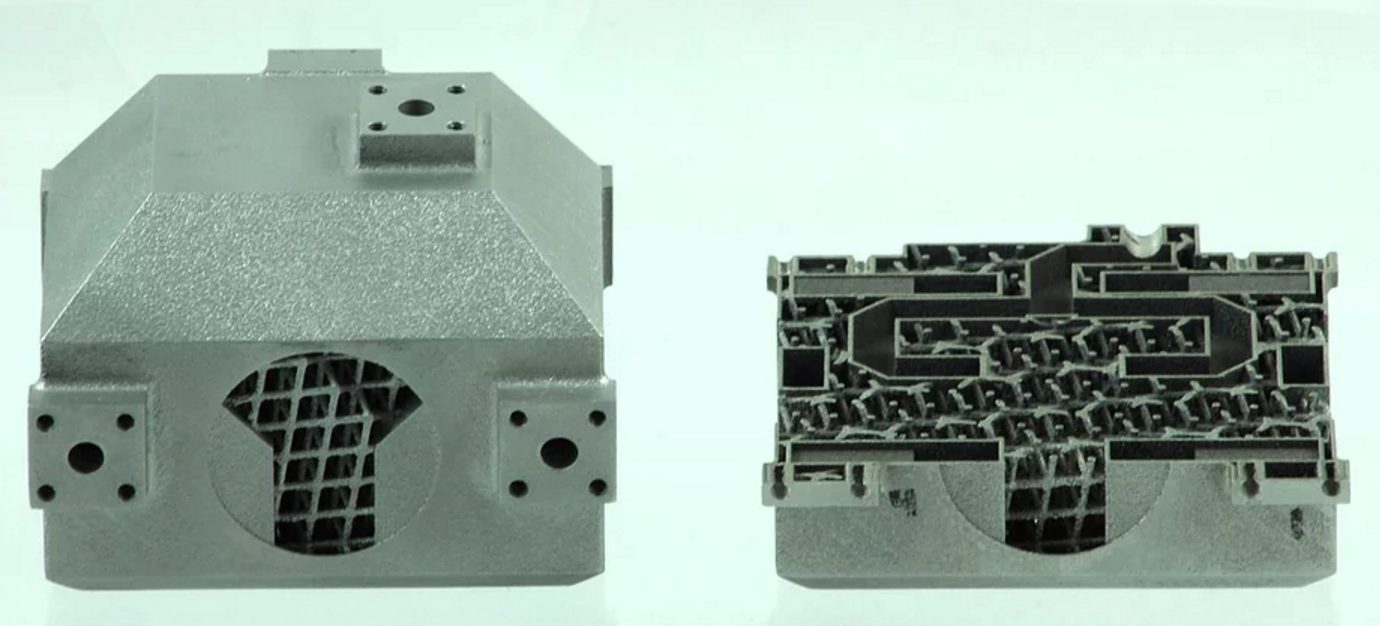Utah-based startup Optisys is rethinking metal antenna production using a Concept Laser 3D printer.
By doing so, Optisys states it has managed to reduce: number of parts, the weight of parts, lead times and production costs. Optisys has combined additive manufacturing technology with advanced simulation tools to design RF antennas and components that would not have been possible to produce until recently.
Researchers from South Korea have similarly deployed 3D printing to create a horn antenna for electromagnetic wave research.

Shaving weight
Antennas are an ever-present component in all commercial and military aircraft, as well as in satellites, UAVs and ground terminals. However, Optisys believes they are typically too heavy, particularly with the RF antennas implemented in aerospace. Following a partnership with U.S software company ANSYS, Optisys developed an alternative method to 3D print the components by utilizing simulation software. With the two technologies, Optisys is able to design parts that are significantly lighter with savings of up to 95%.
To validate this production method, Optisys produced a demonstrator part – an X-band SATCOM Integrated Tracking Array (XSITA) antenna. As a result of 3D printing and advanced simulation software, Optisys reduced the number parts from over 100 to just 1 integrated assembly. Optisys also reports lead times were reduced by 9 months, from 11 to 2, and production costs were cut by at least 20%. COO Robert Smith, explains now the company “redesign everything from an additive manufacturing perspective.”
We take into account the entire system functionality, combine many parts into one, and reduce both development and manufacturing lead times to just a few weeks. The result is radically improved size and weight at lower costs.

3D printing the new frontier
Aerospace is frequent early adopter of 3D printing as the technology promises dramatic weight reductions. Optisys plans to implement the 3D printed antennas on to satellites in the future which may themselves have additional 3D printed parts.
Antenna brackets are currently a leading use of 3D printing for satellites with Thales Alenia Space producing metal 3D printed brackets for its antennas. To this end, Canada Makes supported the development of a large 3D printed metal antenna bracket. Optisys COO, Robert Smith explains the advantages of 3D printing include improved performance,
When we design multiple antenna components into a single part, we reduce the overall insertion loss of the combined parts. And because our antennas are so much smaller this also lowers insertion loss dramatically despite the higher surface roughness of AM build, for similar or even better RF performance than conventional assemblies.
Optisys has several pending patents and is hoping to work with more aerospace companies and academics to advance the use of additive manufacturing in this field.
For all the latest aerospace 3D printing news, subscribe to the most widely read newsletter in the 3D printing industry, follow us on twitter and like us on Facebook.
Featured image shows a model of the XSITA metal 3D printed antenna. All images, unless otherwise stated, via Optisys.


